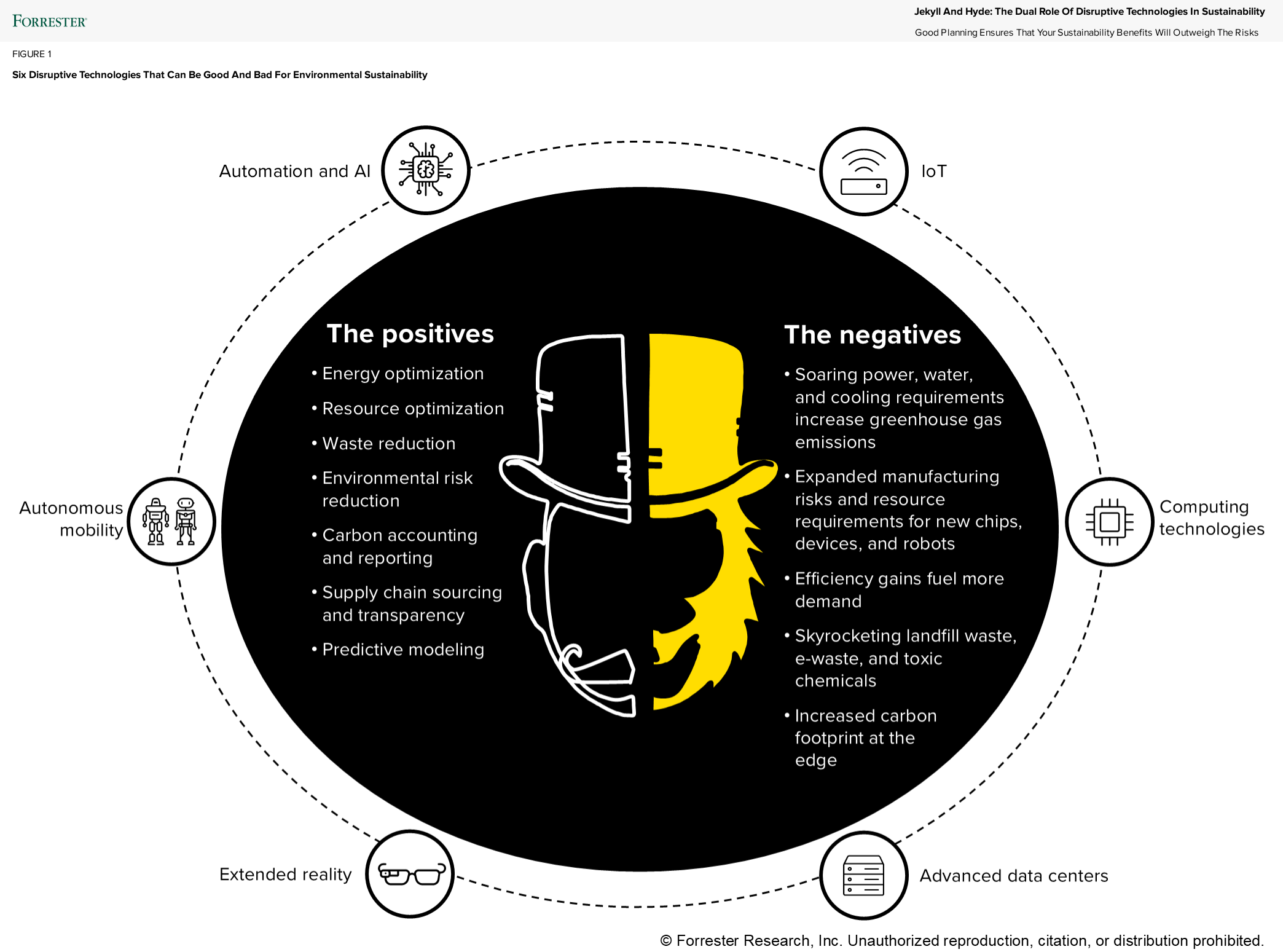Jekyll And Hyde: The Dual Role Of Disruptive Technologies In Sustainability
Disruptive technologies such as automation and AI and autonomous mobility boost efforts toward some strategic priorities but can also work against environmental sustainability goals. For example, these technologies bring high compute demands, increased electronic waste, reliance on critical raw materials, complications to the supply chain, and substantial infrastructure required for deployment. But these disruptive technologies also boost environmental sustainability if used in savvy ways. They enhance energy and resource efficiency, support climate resilience and compliance, enable real-time tracking of environmental KPIs, enable new sustainable business models and products, and advance conservation efforts. For business leaders, the challenge lies in maximizing the optimization potential of these technologies while actively managing their lifecycle impacts and resource intensity.
In our latest report, Jekyll And Hyde: The Dual Role Of Disruptive Technologies In Sustainability, we identified the dual role played by six of the most important disruptive technologies poised to shape sustainability in 2025: automation and AI, IoT, computing technologies, advanced data centers, extended reality, and autonomous mobility.

For a deeper dive, let’s look at AI. An immediate positive is that it transforms sustainability reporting by automating data analysis, aligning disclosures with regulatory frameworks, and customizing content for diverse stakeholders. Beyond reporting, AI can support core sustainability initiatives such as climate risk forecasting, energy optimization, emissions reduction, and supply chain resilience. But AI also introduces significant environmental challenges. The water demand to cool and energy to train and run large models raise concerns about resource use, especially in constrained regions. As AI adoption accelerates, sustainability and technology leaders have a critical role to play in guiding its use.
In the report, we examine some of the most interesting and beneficial use cases and how to curb their environmental impact. These disruptive technologies are reshaping industries and sustainability. Now is the time for business leaders to scrutinize the balance between scale, maturity, and correct use of these disruptive technologies to ensure business resilience, compliance, and long-term profitability.
This report is a collaboration among Forrester’s specialists in each individual topic area: Abhijit Sunil, Paul Miller, Craig Le Clair, Renee Taylor-Huot, and Michele Pelino. Forrester clients can read our report and schedule a guidance session to learn more.
Categories
- Age of the Customer
- AI Insights
- Architecture & Technology Strategy
- CIO insights
- Climate Action
- Cloud Computing Trends
- Emerging Technology
- enterprise architecture
- financial services
- Forr The Planet
- Generative AI
- GRC - Governance, Risk, And Compliance
- Information Technology
- infrastructure & operations
- Innovation
- risk management
- Sustainability
